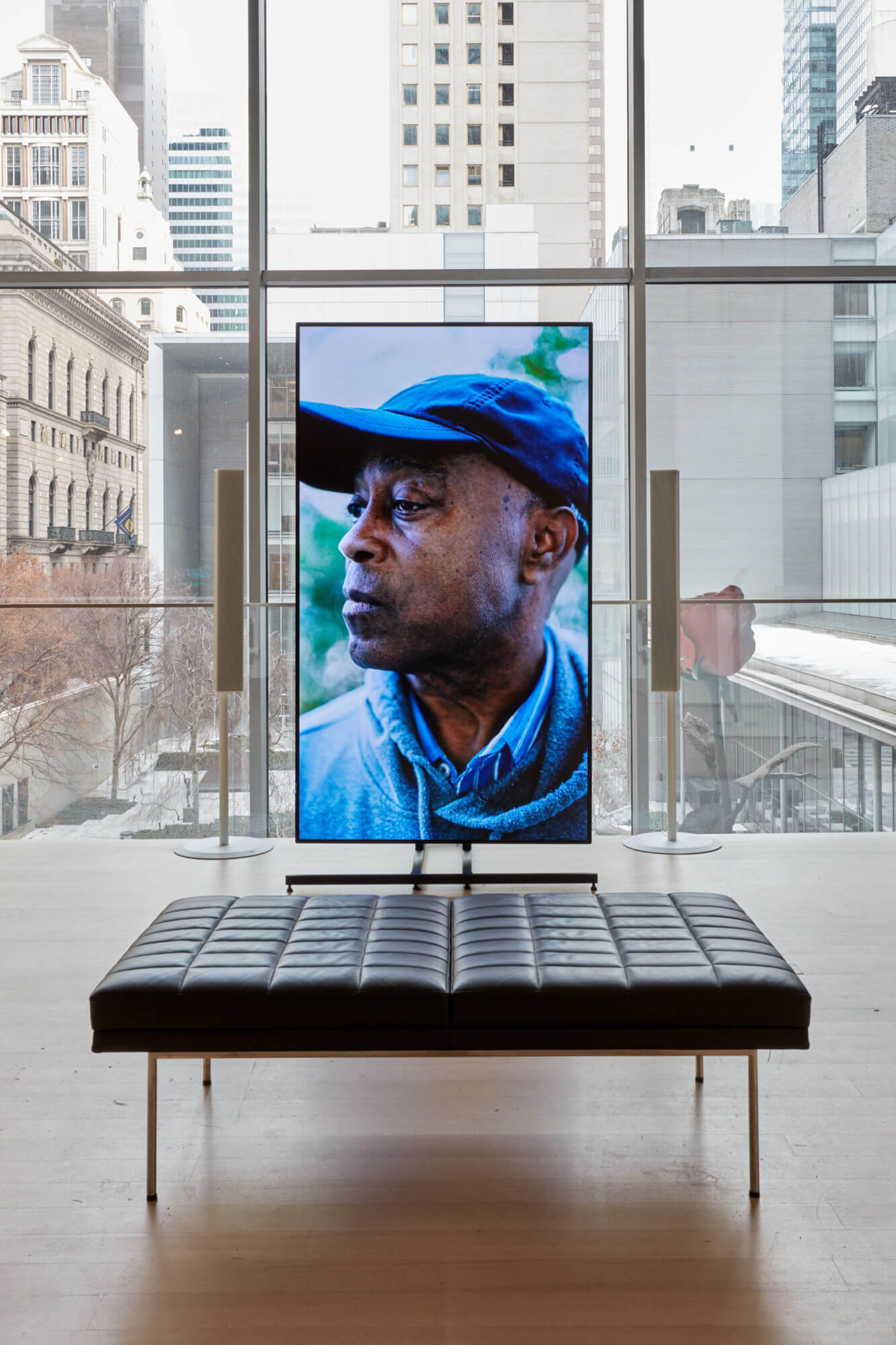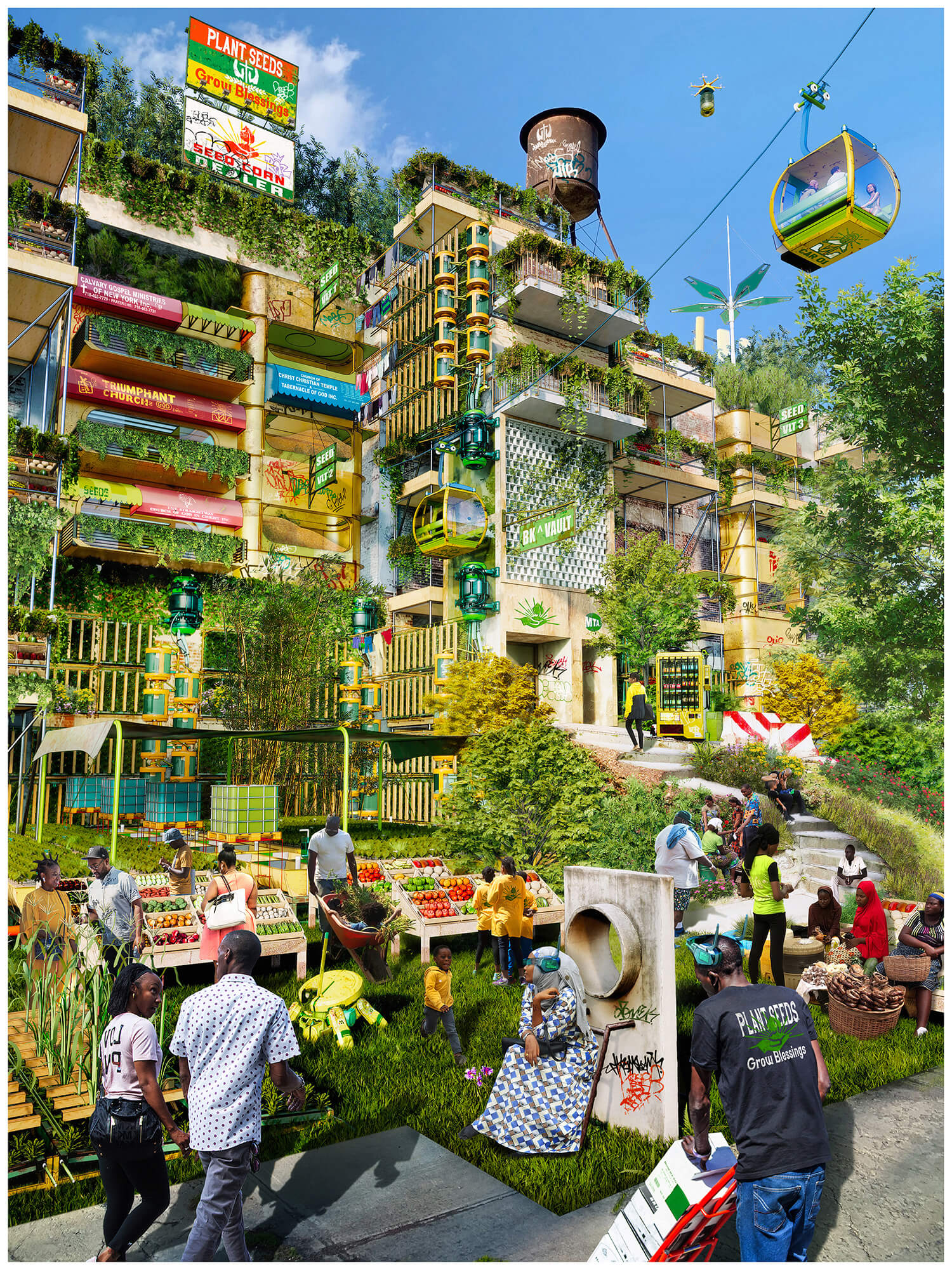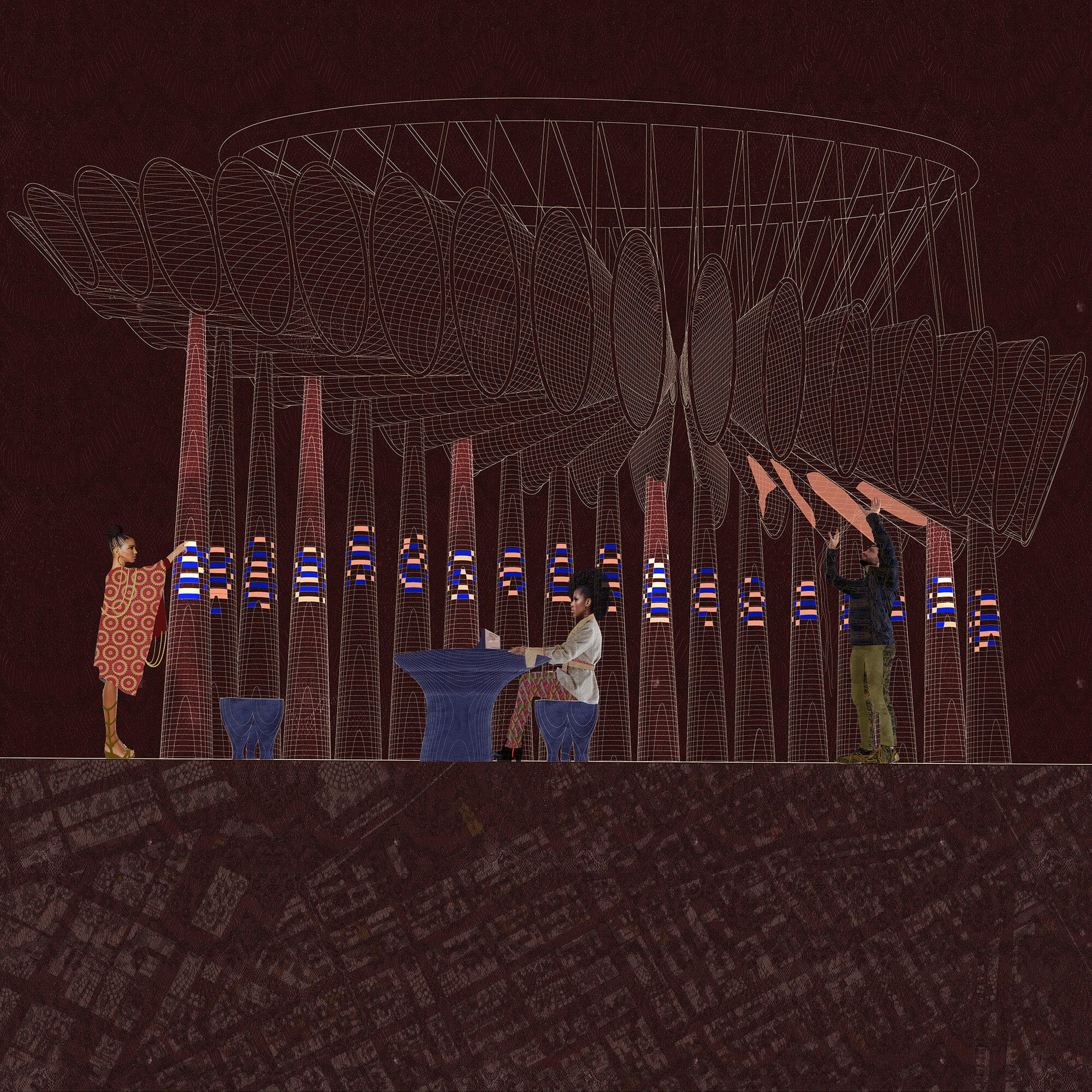In Jorge Luis Borges’s short story On Exactitude in Science, the people of an unnamed empire are daily terrorized by an unlikely force: cartography. The ruling class is obsessed with capturing the full extent of its territories in one giant map, whose increasing enormity begins to physically displace the people. Widely interpreted as a commentary on the tyranny of perfection and even the liberation of abstraction, the story informs visual artist David Hartt’s contribution to Reconstructions: Architecture and Blackness in America, open at the Museum of Modern Art (MoMA) in New York through the end of the month.
Hartt’s film On Exactitude in Science (Watts) depicts the historically Black Los Angeles neighborhood in a flood of images and sounds that greet the visitor entering the museum’s Philip Johnson Galleries. The piece articulates a tension—hinted at in the reference— between rigorous documentation and visionary abstraction present in the collection of works on display. Curated by Sean Anderson and Mabel O. Wilson, the exhibition asks visitors to imagine what could have happened in the United States had the promise of the Reconstruction Era—those 12 short years after the American Civil War wherein Black people were able to decide for themselves what an autonomous life could be—not been betrayed. This requires a good deal of speculative projection, both backward and forwards.

This tension operates at multiple levels, as the show’s 10 participants attempt to both describe the current state of Blackness in architecture and chart out visionary proposals for what it could be. Nearly every one of their works directly incorporates or gestures toward a kind of cartography, which often implicates even the more far-sighted works in a practice of documentation. Much of this mapping is quite explicit, such as in J. Yolande Daniels’s black city: The Los Angeles Edition, which pairs wireframe isometric maps with neighborhood descriptions printed in gold filigree. Like a series of pins pressed into the territory, the piece claims L.A. for the Black lives that built, owned, and shaped it, as if to say we are, were, and will always be here.

In the adjoining room, Olalekan Jeyifous’s The Frozen Neighborhoods pulls the viewer into a solarpunk Crown Heights in Brooklyn, New York. This series of digital images and techno grunge artifacts imagines a future in which young Black coders push back against the mobility restrictions leveraged on New York’s poor by an oppressive eco-capitalist regime. Jeyifous comes closest to responding to the exhibition’s speculative proposal by grappling with the challenge of worldbuilding.

By putting works like On Exactitude in Science (Watts), black city: The Los Angeles Edition, and The Frozen Neighborhoods in conversation, Reconstructions weaves together multiple timelines that propose a revision to architectural history. But worldbuilding is more than expanding the existing canon. It’s a difficult proposition. If the promise of Reconstruction had been kept, nothing that we currently know of the world would be true. If Reconstruction had prevailed, the histories revealed by Daniels’s work would turn to dust in our minds since segregation would likely not have taken hold. If Reconstruction had prevailed, the coder-urbanists of Jeyifous’s Crown Heights may not have neoliberal capitalism to rail against.
While worldbuilding offers us the opportunity to model the unimaginable, it is also a parametric endeavor: pull one string in the fabric of reality and the whole of it bends and ripples. That’s the fantastic thing about this gesture, inject a little abstraction, a twist or a shift, and the entire field unfolds into rich possibility. But as the unnamed empire of Borges’s short story reveals, there is also anxiety in abstraction because it requires stepping past the point of what exists and into what could be. It is a peeling away of both our known pain and our known triumphs. MoMA’s Reconstructions proposes a wild imagining in order to push the viewer to engage with an expanded history of architecture. But it does not quite offer enough remove from that history to allow the viewer to envision another world. However, in its many cartographic gestures, a savvy audience may find the map to one.











